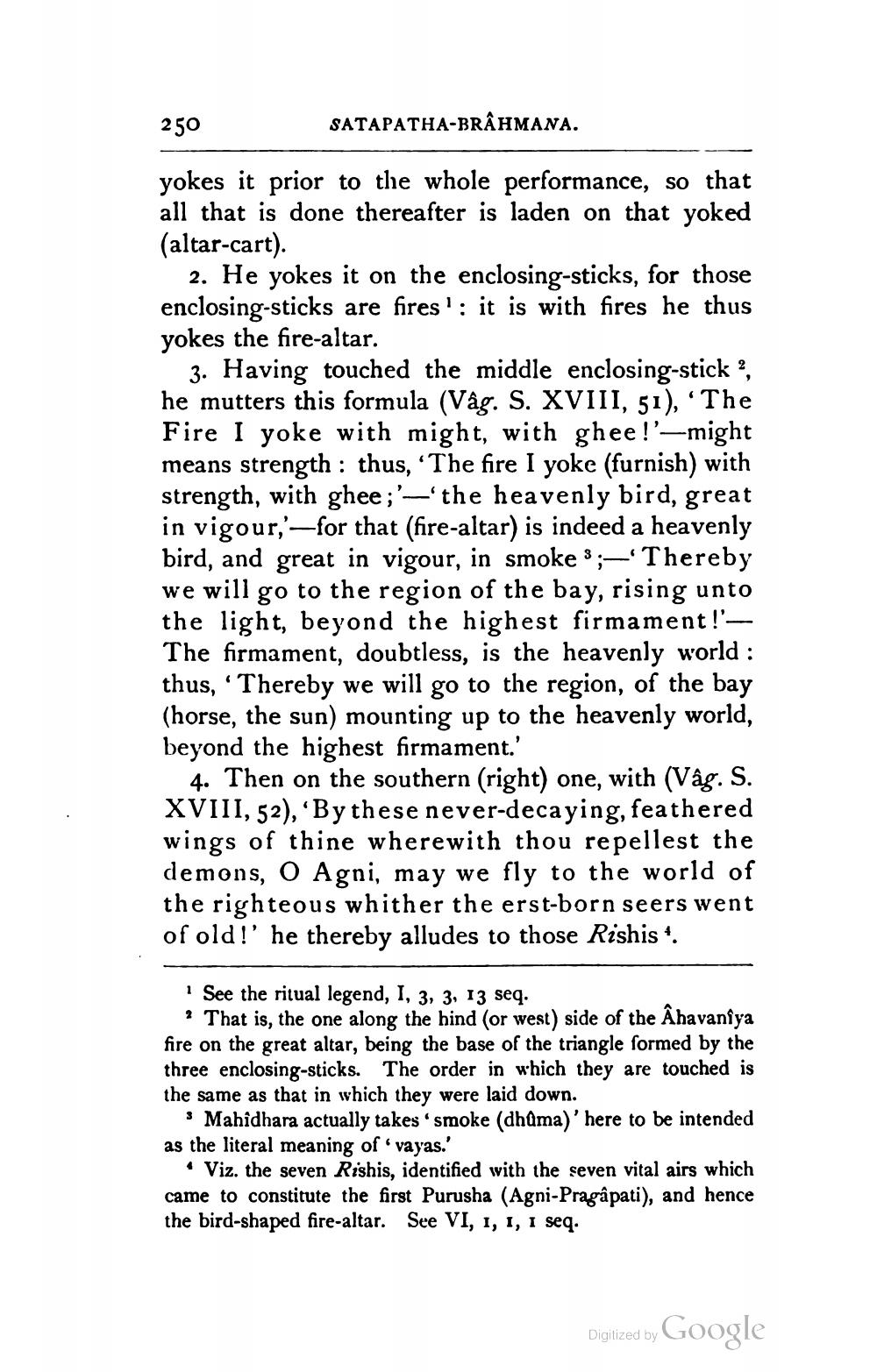________________
250
SATAPATHA-BRAHMANA.
yokes it prior to the whole performance, so that all that is done thereafter is laden on that yoked (altar-cart).
2. He yokes on the enclosing-sticks, for those enclosing-sticks are fires: it is with fires he thus yokes the fire-altar.
3. Having touched the middle enclosing-stick 2, he mutters this formula (Vâg. S. XVIII, 51), 'The Fire I yoke with might, with ghee!'-might means strength: thus, 'The fire I yoke (furnish) with strength, with ghee;'-'the heavenly bird, great in vigour, for that (fire-altar) is indeed a heavenly bird, and great in vigour, in smoke ;-Thereby we will go to the region of the bay, rising unto the light, beyond the highest firmament!'The firmament, doubtless, is the heavenly world: thus, 'Thereby we will go to the region, of the bay (horse, the sun) mounting up to the heavenly world, beyond the highest firmament.'
4. Then on the southern (right) one, with (Vâg. S. XVIII, 52), 'By these never-decaying, feathered wings of thine wherewith thou repellest the demons, O Agni, may we fly to the world of the righteous whither the erst-born seers went of old!' he thereby alludes to those Rishis *.
1 See the ritual legend, I, 3, 3, 13 seq.
2 That is, the one along the hind (or west) side of the Âhavanîya fire on the great altar, being the base of the triangle formed by the three enclosing-sticks. The order in which they are touched is the same as that in which they were laid down.
Mahidhara actually takes 'smoke (dhûma)' here to be intended as the literal meaning of 'vayas.'
• Viz. the seven Rishis, identified with the seven vital airs which came to constitute the first Purusha (Agni-Pragâpati), and hence the bird-shaped fire-altar. See VI, 1, 1, 1 seq.
Digitized by
Google




